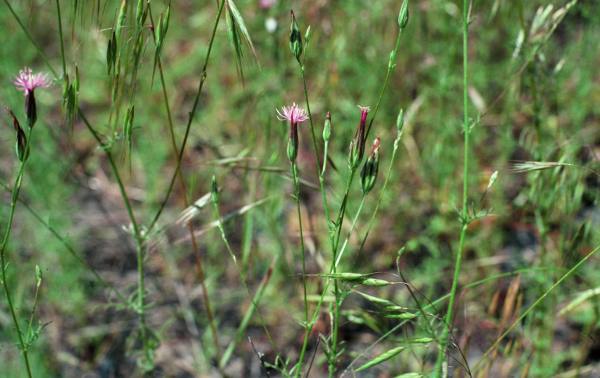March 26, 2013

Over the past decade, dozens of “early detection, rapid response” initiatives have been launched by states to keep invasive species from devastating natural habitats and damaging our economy. Many of these programs use mobile apps and online databases to revolutionize how we collect data on harmful invaders – making it easier to map infestations and to share information broadly.
But scientists with the Weed Science Society of America (WSSA) say one part of the equation is missing: We often fail to take prompt, effective action based on what we learn, despite the advantages of early intervention. Studies show that small, newly established invasive weed populations can expand at rates of up to 60 percent per year. As the size of the infestation increases, the cost of control soars while the probability of successful management plummets.
“Early detection creates opportunities for us to make smart decisions and eradicate new invasive weeds before they spread widely and become entrenched,” says John Jachetta, Ph.D., chair of the Indiana Invasive Species Council and a member of the WSSA Science Policy Committee. “In those early stages, control efforts are typically easier, more successful and far more cost effective.”
If you are enjoying reading this article, please check out Southwest Farm Press Daily and receive the latest news right to your inbox.
Unfortunately there are many examples of a known infestation unfolding without early intervention. One of those involves common crupina (Crupina vulgaris), a noxious weed in the sunflower family that can ruin valuable pastures and prairies.
A native of Europe, common crupina was first discovered in the U.S. in Idaho in 1969. But there were no concerted efforts to destroy that small initial infestation. A decade later, the weed covered many thousands of acres and had earned a Federal Noxious Weed designation. Only then did research get underway to explore the possibility of eradicating the plant.
It took years to complete a study and years more to convene a task force to review the study results. By then common crupina had spread well beyond Idaho into other neighboring states – making true eradication a very costly, time-consuming and unlikely proposition.
Other examples show a more effective approach. Some states and municipalities have launched action-oriented “early detection, rapid response” programs that are producing impressive results.
In California, early detection and early response prevented a potential environmental disaster triggered by “killer algae” (Caulerpa taxifolia). A native of Europe, killer algae is a prolific producer of a chemical that is toxic to fish and other organisms. It also is easily spread since small pieces of the plant can break free and grow into new colonies. Once the algae is well established, eradication is almost impossible.
In 2000, a small infestation of killer algae was discovered in a lagoon in San Diego County. Soon after, a second infestation was discovered in a nearby harbor in Orange County. Knowing the potential damage killer algae represented to fishing and recreation, multiple agencies at the local, state and federal level sprang into action and coordinated a response.
Black plastic tarps and chlorine were used to kill the algae at both sites. In addition, recreational divers were trained to spot the weed and to sound an early alarm if there were new outbreaks. As a result, what could have become a very costly problem appears to have been quickly and successfully resolved.
“We’ve long understood the value of an early response to diseases impacting human health,” Jachetta said. “It’s time to bring that same sense of urgency to our natural environment and to take prompt, effective action to stop harmful invasive weeds.”
Effective Program
An effective program for “early detection, rapid response” will incorporate these seven important steps.
Identify. Both scientists and lay people are taught to identify problem plants.
Report. Online tools make it easy to submit information on a sighting.
Verify. Scientists validate reports of suspected invasive species.
Review. Data is used to keep tabs on the geography of an infestation – where the invasive weed has been spotted and how quickly it is spreading.
Assess. Experts evaluate the risk of the infestation to natural ecosystems, crops and the economy.
Establisha plan. An integrated plan is developed for managing the infestation.
Rapidly respond. The plan is quickly implemented and there is ongoing monitoring to gauge the effectiveness of control efforts.
For more information, visit www.wssa.net.
You may also like:
Resistant weeds changing the way we farm
Prevention is best strategy for resistant weed management
Across the Sunbelt, herbicide resistance changes production options
You May Also Like




